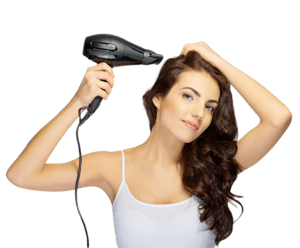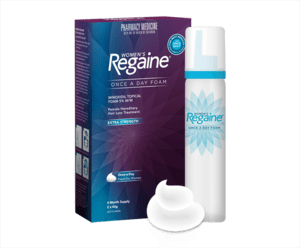
Hair Facts
Keep things simple and look here for answers to the most common questions and concerns about hair, hair thinning or hair loss to get to the facts.
Brush up on the basics
Let’s kick things off with some fun facts about your hair. Did you know that your hair is mostly made up of keratin, which is the same protein that makes up animal horns and claws, as well as birds’ feathers and beaks? All of the hairs you can see are technically dead cells – except for the hair inside the epidermis of your scalp. Hair contains information about everything that’s ever been in your bloodstream, and it can stretch up to 30% of its original length when wet! Pretty amazing, right? The hair on our heads isn’t just there to make us look good, it also serves a couple of key evolutionary purposes, including keeping us warm (yes, hair is an insulator!) and protecting the delicate skin on our head from elements such as UV Rays.
While hair strands may appear silken and thin, they’re actually made up of three distinct parts, the cuticle; which is the outer layer of the hair, the centre layer which is called the medulla and the cortex; the section containing the protein, Keratin.
If you have naturally straight hair and desire beachy waves, you’ll likely have to turn to the styling tools as it’s the shape of the hair fibre which determines whether or not you have poker-straight strands (a round hair fibre) or beautiful tumbling waves (irregular or oval shaped fibers).
Following bone marrow, hair is the body’s second fastest growing tissue, and at any one time in a normal healthy scalp, 90% of the hairs on your scalp are in the growth phase (anagen). The other 10% are resting (telogen).
Some hair loss facts
The average person has between 100,000 and 150,000 hairs on their head alone. It’s totally normal for you to shed up to 100 hairs every single day of your life – many of them going completely unnoticed! Once a hair is lost like this, a new one grows in to replace it. Your whole head of hair is replaced in this manner every four years or so.
Hair grows on average 15cm every year – which means if your hair is longer than shoulder-length, the ends could be over four years old! While hair loss can be confusing and a real source of upset for many women, it’s important to remember that balding only becomes visible with a notable amount of hair loss so not everyone who experiences hair loss will be seen to be ‘bald’.
You're not alone
Hair thinning or hair loss among women is more common than you might think. If you notice that you have less hair than you used to, you should know you’re not alone. In fact, 1 in 3 women after the age 30 experience some form of hair thinning.
Today is the greatest day to start
You may think hair thinning only affects older women, or women going through menopause. The truth is, while hair thinning is more common for women in their 30s or 40s, hair thinning can start as early as in your 20s.
All kinds of causes
Some types of hair thinning, such as those caused by extreme stress or giving birth, are temporary and eventually your hair will grow back by itself. However, in many cases a widening part is the beginning of genetic hair loss, which will progress throughout your lifetime if left untreated. Identifying the cause of your hair loss will help you decide how to move forward with a regrowth plan, and if Women’s REGAINE® is right for you.
What to look for
Hereditary hair loss has several telltale signs. If you are unsure if you have these signs, talk to your doctor, dermatologist or health care professional to confirm that what you’re experiencing is genetic hair loss, and to find out if Women’s REGAINE® can help you regrow your hair.
- A wider part in the mirror
- A family history of hereditary hair loss
- More hair with the root attached on your brush, on your pillow, or in the shower drain
- A harder time styling your hair


